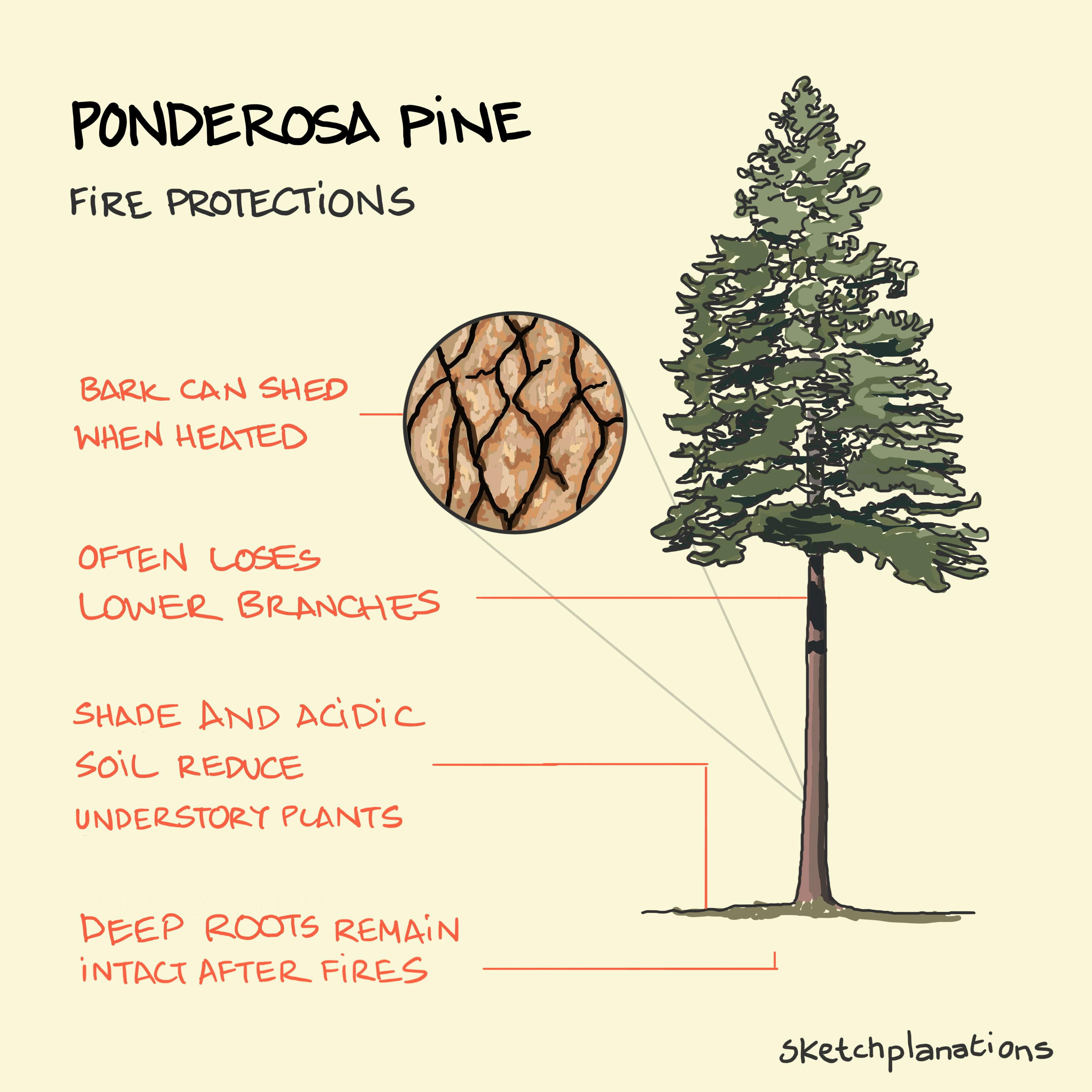Ponderosa pine fire protections

- Prints
- Copied!
👇 Get new sketches each week
Many trees and forests were built to live with fire and in many cases, fire is essential for a healthy ecosystem. Giant sequoias, for example, have cones that dry out during surface fires releasing their seeds so they can germinate at the ideal time to grow with less competition.
Ponderosa pines have a number of ways they have evolved to live with fire.
They have bark that when heated can split off from the tree protecting the trunk and reducing the spread of fire.
They often lose lower branches, sometimes from smaller fires, reducing the likelihood of ladder fires that climb towards the crown.
The shade they cast and the acidic soil they favour helps reduce understory plants that could catch fire beneath the tree and help a fire to latch onto the main trunk.
They have deep roots that can remain intact after a fire allowing the tree to still gather water and nutrients even when surface roots are damaged.
Some policies of suppressing natural fires have changed the balance of many forest systems and helped promote some of the recent mega-fires.
More about the Fire ecology of ponderosa pines (pdf).
Also see: identify a douglas fir, time hierarchy

